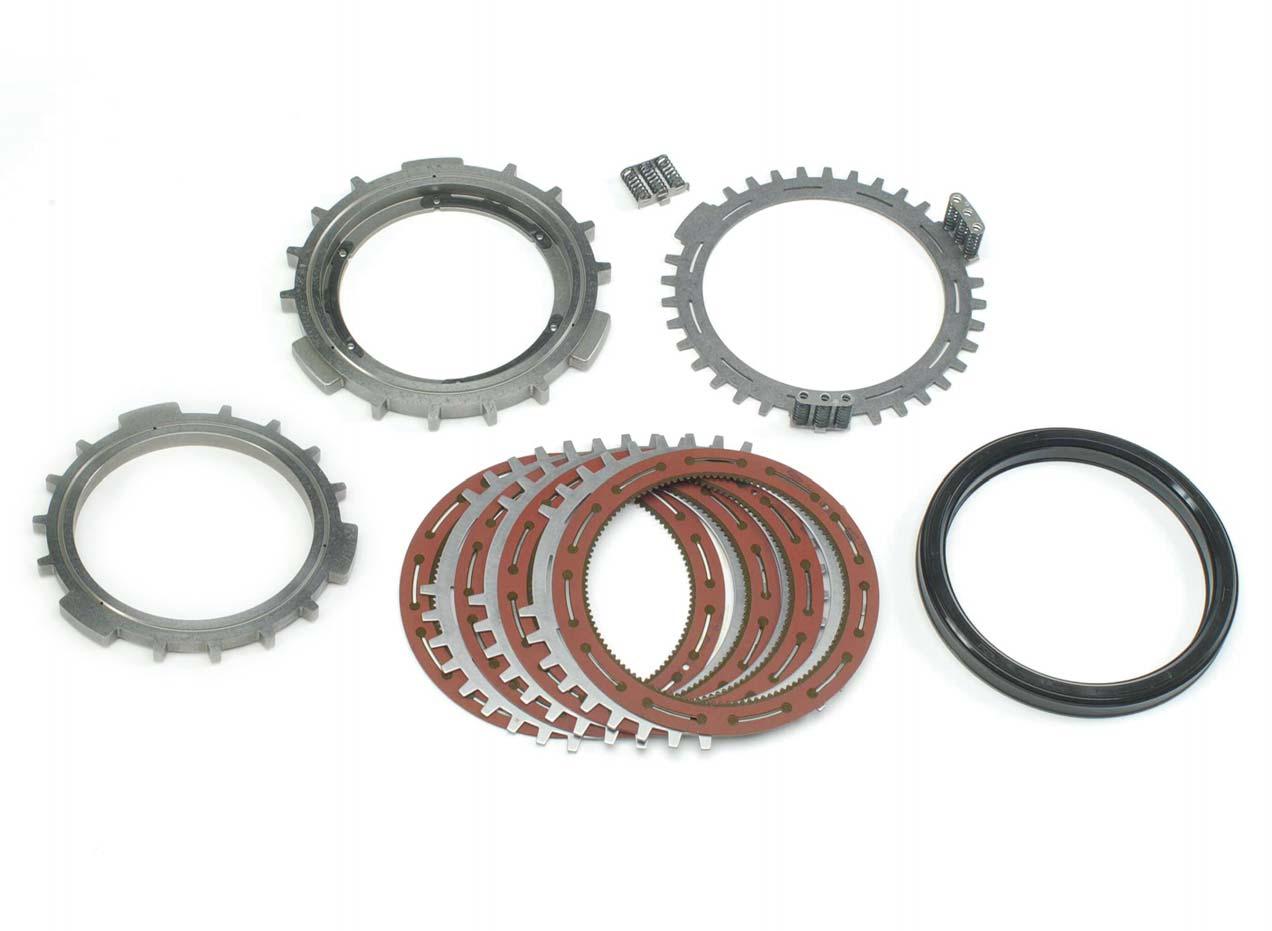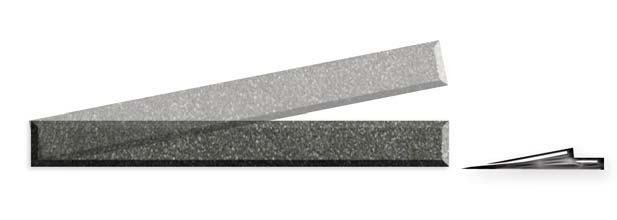
2 minute read
C3 and C4 Clutch Pack Components
C. C3
Backplate B. C3/C4 Return
Spring
Assemblies
D. C4
Backplate E. C3/C4 Clutch Pistons
A. C3/C4 Clutch
Packs
A. Inspect all friction plate contact faces for excessive wear, embedded metal particles, cracking and distortion. Inspect the plate splines for burrs, cracks and damaged spline teeth. Replace the plate if spline damage cannot be repaired using a soft stone or crocus cloth. Minimum allowable friction plate thickness is 2.375 mm (0.0935 inch). Minimum allowable oil groove depth is 0.20 mm (0.008 inch). Maximum allowable coning is 0.225 mm (0.009 inch). NOTE: Anti-freeze (glycol) and/or water will adversely affect the bonding agent between the friction material and steel core. Replace any friction plates which have been exposed to water and/or glycol. Friction material which is loose or flaking indicates that the plates have been exposed to glycol and/or water. Reference SIL 18-TR-98, Rev. A for details.
NOTE: Battered and worn spline teeth may be an indicator of driveline issues. Replace the clutch plates and check the driveline. Inspect reaction plate contact surfaces for chips, cracks, grooves, scoring and signs of discoloration. Inspect reaction plate tangs for chips, cracks and signs of battering. Replace the plate if damage cannot be repaired using a soft stone or crocus cloth. Replace the plate if any tangs are broken, bent or otherwise distorted. Minimum allowable plate thickness is 2.440 mm (0.0961 inch). Maximum allowable coning is 0.40 mm (0.016 inch). B. Inspect the C3 and C4 clutch return spring plates for cracks, chips, burrs, bends and distortion. Replace the plate if damage cannot be repaired using a soft stone or crocus cloth. Replace the spring assembly if springs are broken, cracked, permanently set, showing signs of wear due to rubbing or showing signs of discoloration.
(continued)
Supersession Information
C3/C4 Return Spring Assembly and Plate Updates Reference SIL 1-1K2K-04
Updates Aid The Assembly Process.
C. Clutch Plate
Thickness and
Coning Coned Plate
Thickness

Reference the Service Manual Spring Data Charts for spring specifications and identification. Minimum allowable backplate thickness is 3.110mm (0.1224 inch). Maximum allowable backplate coning is 0.40mm (0.016 inch). C. Inspect the C3 clutch backplate. Replace the backplate if has burrs, scoring or other damage which cannot be repaired using a soft stone or crocus cloth. Replace the backplate if it is cracked or broken. Check the backplate for coning. Replace the backplate if any coning is detected. Minimum allowable backplate thickness is 15.325mm (0.6033 inch). Replace any thrust plates showing signs of excessive or uneven wear, gouges, scoring or cracks. Calculate thrust plate thickness following the Service Manual guidelines. Minimum allowable thrust plate thickness is 3.00mm (0.1181 inch). D. Inspect the C4 clutch backplate. Replace the backplate if has burrs, scoring or other damage which cannot be repaired using a soft stone or crocus cloth. Replace the backplate if it is cracked or broken. Check the backplate for coning. Replace the backplate if any coning is detected. Minimum allowable backplate thickness is 15.40mm (0.6063 inch).

Flat Plate Check Using Feeler Gauge
Calculate thrust plate thickness following Service Manual guidelines.
E. C3 and C4 clutch pistons include a bonded seal. Replace the pistons during overhaul.










